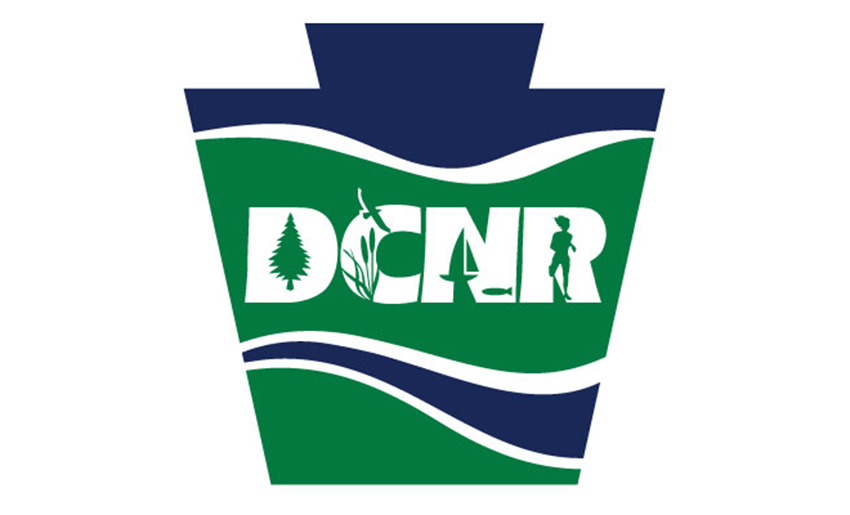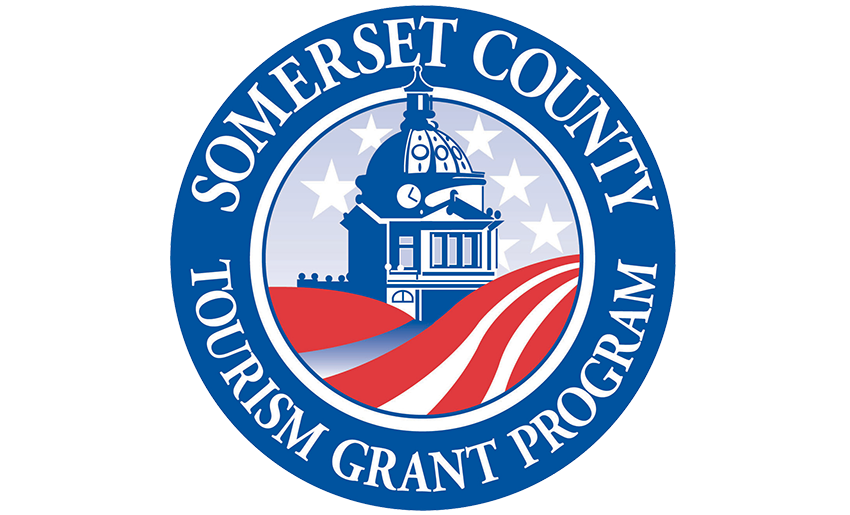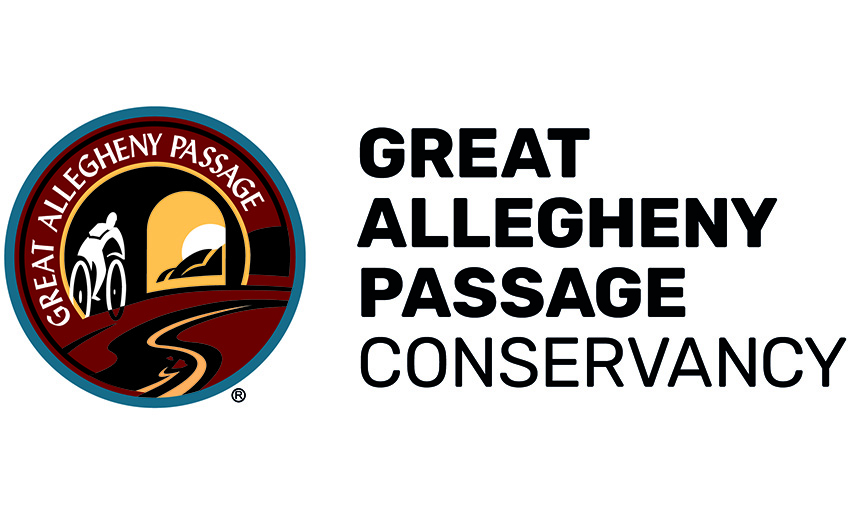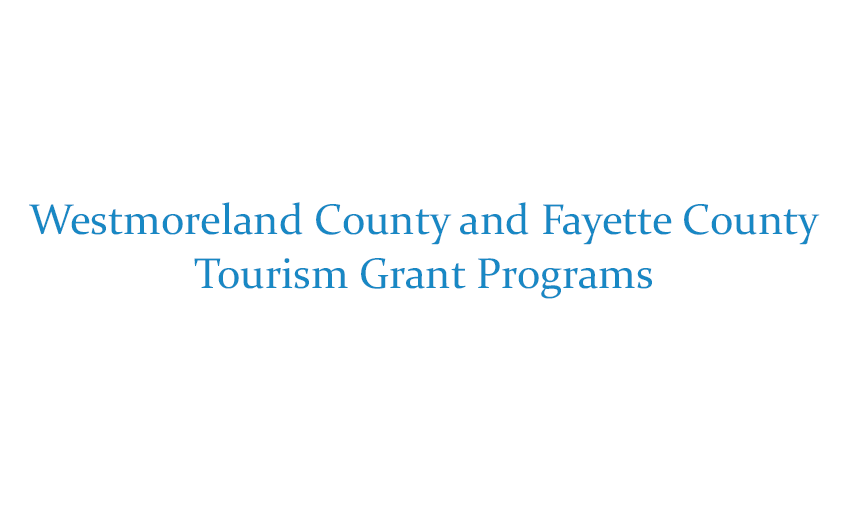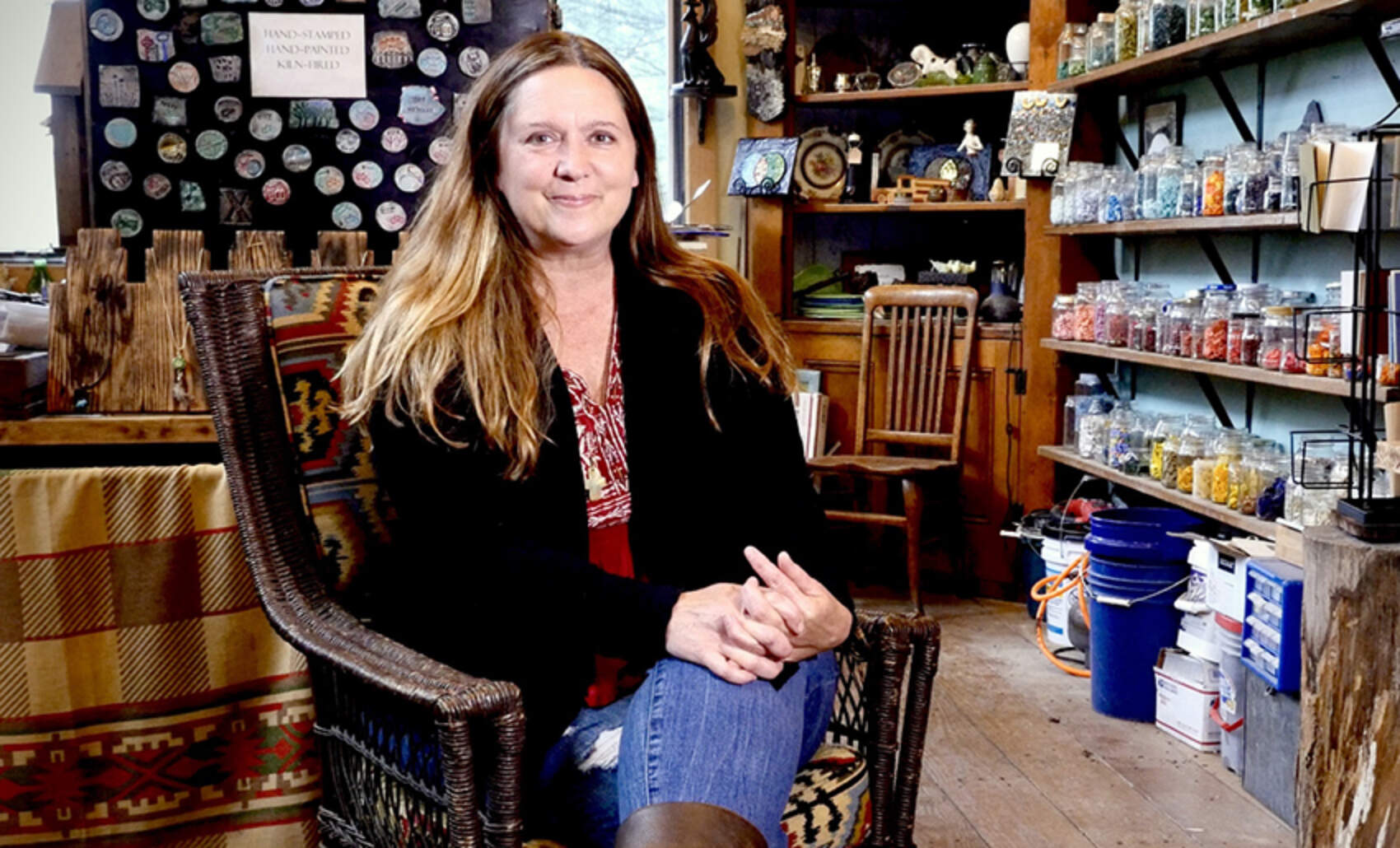“I remember my dad being sad that the railroads and the trains were gone. I understand that bittersweetness. I get to talk about that to the people that are riding on a piece of the past. Some of them don’t even realize they’re riding on the old railroad. They don’t even know.”
“The house I live in is the reason I’m here. It was originally built as the office for the coal mine. Pittsburgh Coal Company came in around the late 1800’s and started to mine this little hillside for coal. Whitsett grew up around it as a coal patch town. I’ve been creating a little homestead here ever since 2015.
“For the last six years I’ve been welcoming the world of artists and the world of travelers, to see what was left of Banning Number Two Coal Mine Processing Plant. It’s been sitting, just sitting, and waiting. Waiting for something to happen after the coal company left.
“When I found this property, I was fortunate enough to be able to build this little 450 square foot piece of mosaic heaven for myself. And because it’s right on the Great Allegheny Passage, it’s a perfect, little quiet business. We are set on 11 acres. Much of it goes straight up the mountain. The other side of the property that’s not the studio or the house is The Ruins Project.
“How would I describe The Ruins? It’s a history lesson. It’s an art gallery. An ornithology lesson. A little bit of everything.
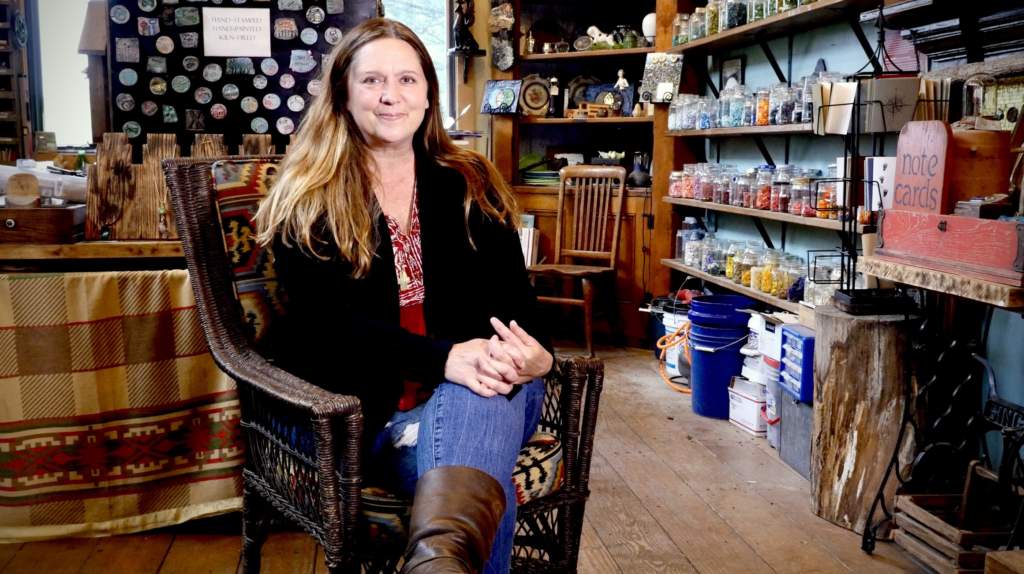
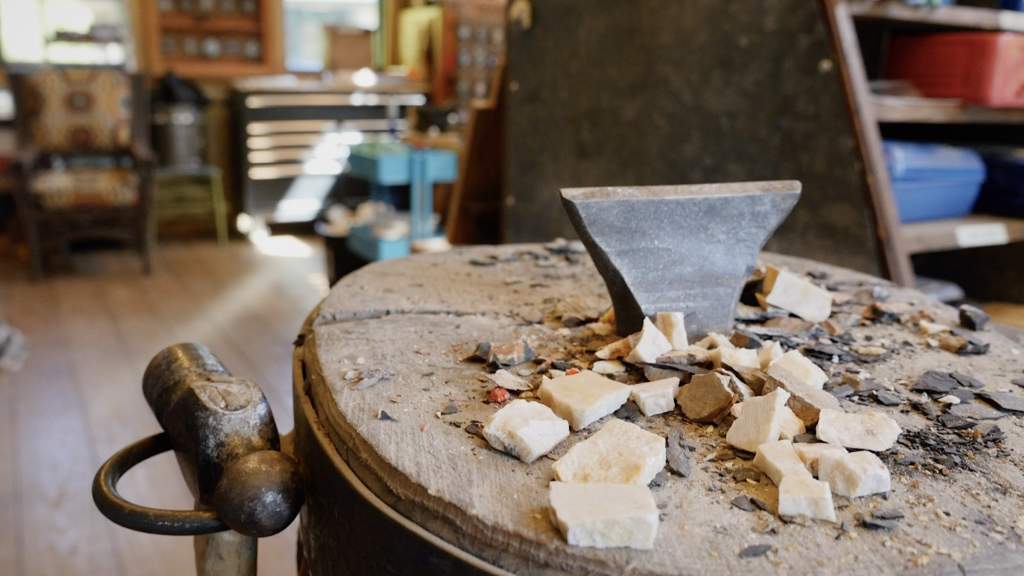

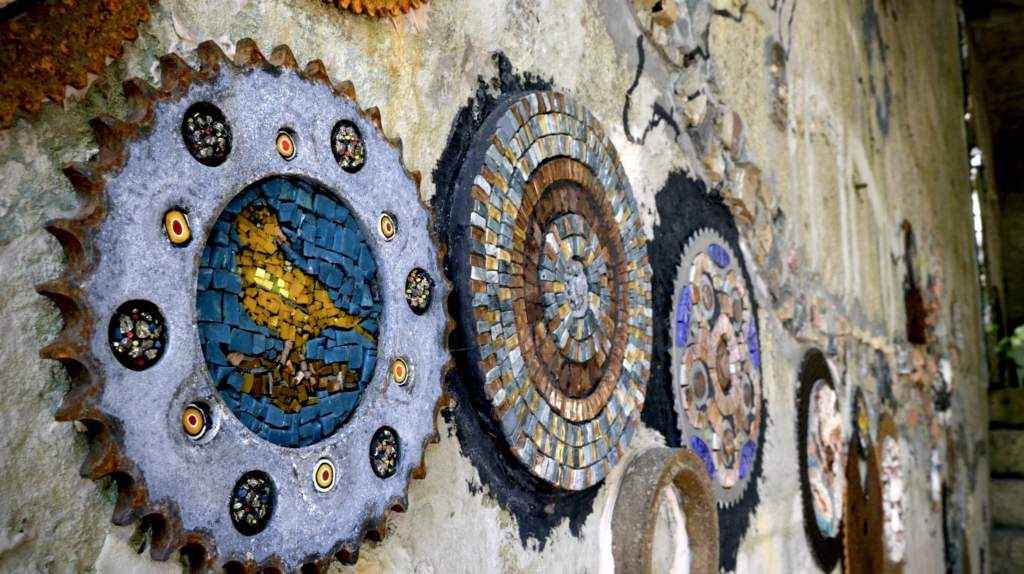
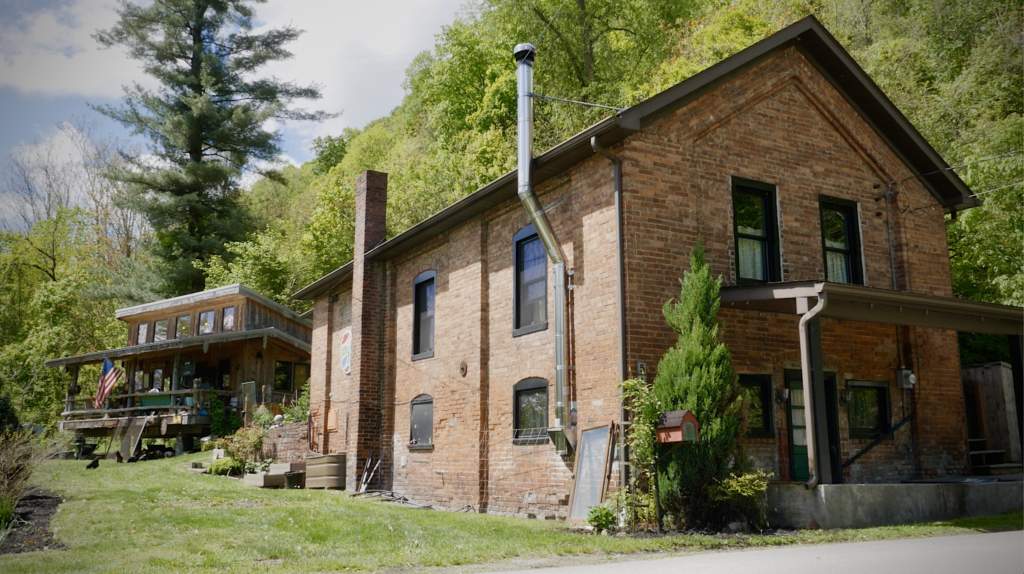

“I remember my first walkthrough six winters ago. It was January. I thought to myself: ‘Rachel, what have you done? What are you doing?’ I saw the hugeness of all these beautiful, imperfect walls. Now we have the beginnings of a very historic bridge being made. We have a giant train that’s a pretty-close rendition of the train that used to run right by here carrying coal, coke, iron ore and limestone. We have the wall of gears, native birds of Pennsylvania, a map of the Great Allegheny Passage all the way from Downtown Pittsburgh to Cumberland, Maryland. So there’s all kinds of poetic justice going around with what we’re creating.
“We have close to a hundred artists from all over the world and all over this country, who are creating very specific kinds of mosaic to help tell the story of this part of the world, that being the coal mine culture, bituminous coal that fueled this country during the industrial revolution.
“After Pittsburgh Coal Company left, the little places along this Youghiogheny River valley were kind of left behind. I’ve seen a good bit of the world and it always didn’t sit quite right with me that the people I come from are seen in a certain way. I’m trying to bring their stories back and introduce the world to the magic that happened here, along with lots of tragedy too. In our very fractured world we’re all living in, coal, C-O-A-L, has become that four-letter word. But I believe very strongly that The Ruins transcends politics.
“For an artist who comes to work at The Ruins, the first rule is to honor what was. That doesn’t mean you have to create a coal miner portrait or anything like that. It just means to not dishonor the memory of what happened here and to tread carefully on this ground, because I do believe it is sacred. Men died there. People suffered.
“I wouldn’t be here if it weren’t for the GAP. I knew I wanted to create a business here. It’s a great thoroughfare of humanity passing by me every day. I remember my dad being sad that the railroads and the trains were gone. I understand that bittersweetness. I get to talk about that past to the people that are riding on a piece of the past. Some of them don’t even realize they’re riding on the old railroad. They don’t even know.”
This content was created by Anita Harnish for the Great Allegheny Passage Conservancy and financed through grants from the Pennsylvania Department of Conservation and Natural Resources’ Bureau of Recreation and Conservation, through its Community Conservation Partnerships Program and Environmental Stewardship Fund, administered by Rivers of Steel Heritage Area and Pennsylvania Environmental Council’s Laurel Highlands Mini Grant Program; through funding via the Westmoreland, Fayette, and Somerset County Tourism Grant Programs; and with funds made available by the Great Allegheny Passage Conservancy.
